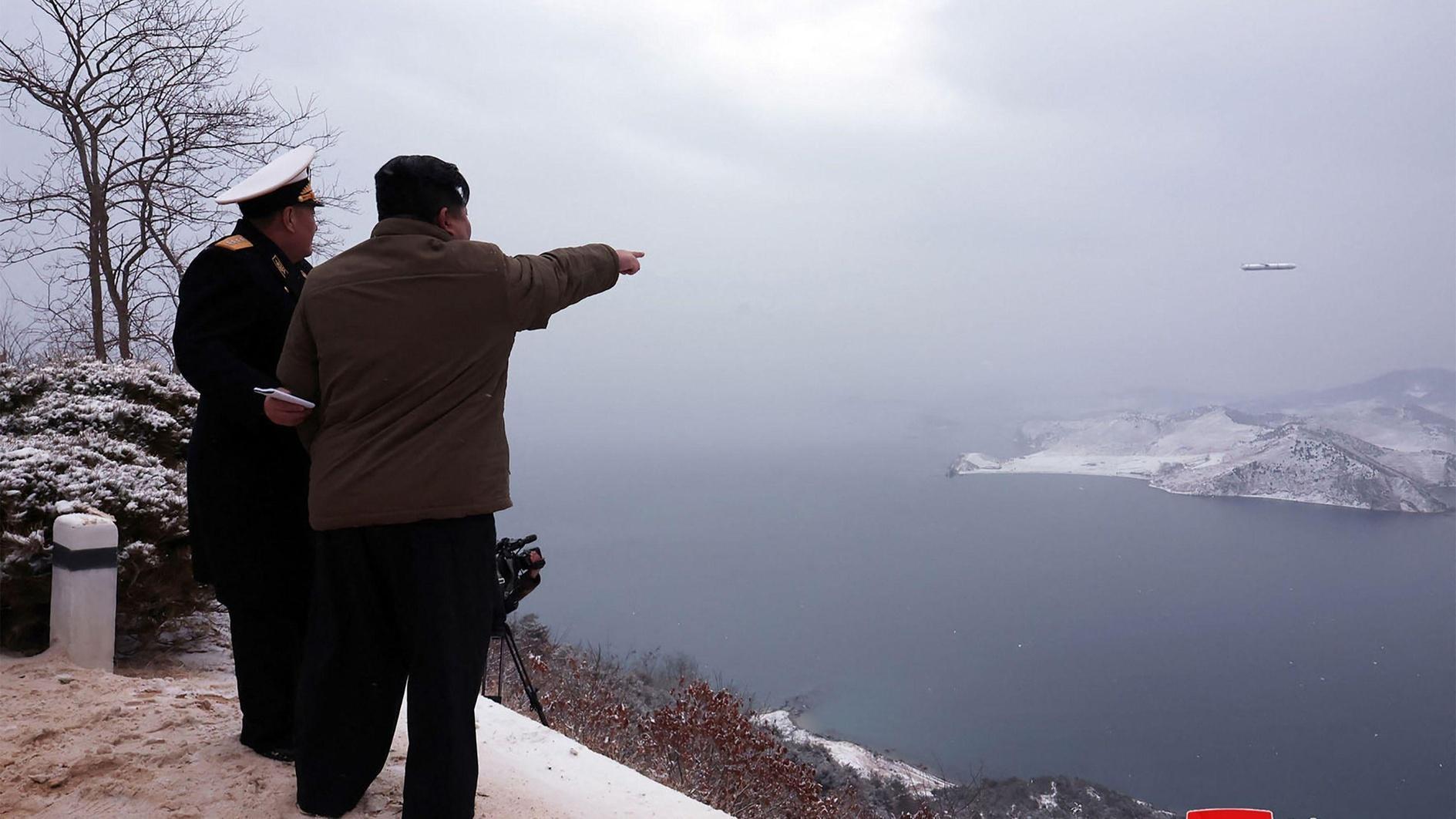
North Korean leader Kim Jong Un has hailed the test launch of a new strategic cruise missile from a submarine as a key moment in building the nation's naval power, state media said Monday.
Pyongyang has accelerated weapons testing in the new year, including tests of what it called an "underwater nuclear weapon system" and a solid-fuelled hypersonic ballistic missile.
Kim expressed "great satisfaction" over Sunday's test, state-run news agency KCNA said, "which is of strategic significance in carrying out the plan... for modernizing the army which aims at building a powerful naval force."
The North Korean leader separately inspected "the building of a nuclear submarine" and discussed issues related to the construction of other new warships, the report added without giving details.
A nuclear-powered submarine has been on a laundry list of strategic weapons set out by Kim at a key party congress in 2021, along with a hypersonic warhead, spy satellites and solid-fuel intercontinental ballistic missiles.
KCNA said Sunday's "submarine-launched strategic cruise missiles" (SLCM) were in the air for approximately two hours, but did not say how far they flew or whether they had been launched from above or below the water.
Photos carried by state media showed a missile soaring up into the sky from the water leaving a huge trail of white smoke, but it was not clear whether it had been fired from a submarine.
Unlike their ballistic counterparts, the testing of cruise missiles is not banned under current U.N. sanctions against Pyongyang.
Kim "guided" the launch of the two Pulhwasal-3-31 missiles on Sunday, KCNA reported.
The Pulhwasal-3-31 is a new generation of strategic cruise missiles that Pyongyang said it had only tested for the first time on Wednesday.
Cruise missiles tend to be jet-propelled and fly at a lower altitude than more sophisticated ballistic missiles, making them harder to detect and intercept.
North Korea's exact sea-based launch capabilities remain unclear, and previous tests were carried out from older vessels, including from a submerged platform, rather than an actual submarine.
In March last year, North Korea launched two SLCMs that flew 1,500 kilometers (930 miles), according to Pyongyang, putting all of South Korea and much of Japan within range.
But analysts said it appeared they had been launched from above water level, thereby removing the stealth benefit of the weapon.
'New threat'
Improving the country's naval power was one of the key decisions reached at the year-end party meeting, and given Sunday's launch was personally overseen by Kim, analysts say it signals the direction of Pyongyang's defence policy this year.
"They will focus on improving naval power in the East Sea and test weapons systems that can be mounted on submarines, with the first attempt being this strategic cruise missile," said Yang Moo-jin, president of the University of North Korean Studies.
"In the future, it will lead to the development of submarine-launched ballistic missiles and nuclear-powered submarines, which will have a much higher impact than SLCMs," he added.
North Korea already has an operational submarine-launched ballistic missile (SLBM) called the Pukguksong-3, with an estimated range of 1,900 kilometres.
Proven SLBM capability would take North Korea's arsenal to a new level, allowing deployment far beyond the Korean peninsula and a second-strike capability in the event of an attack.
Choi Il, a retired South Korean Navy submarine captain, said once a nuclear-tipped SLCM becomes operational, it will pose a "new threat" to South Korea.
"North Korea will be equipped with a two-track nuclear attack means, with the capabilities of mass destruction of a SLBM and precision strike of a SLCM," he said.
North Korea last year launched what it called its first "tactical nuclear attack submarine", which the South Korean military at the time said did not look to be operational.
Analysts said the vessel appeared to be modified from an existing diesel-electric submarine originally designed in the 1950s, and have posed questions about its limitations and vulnerabilities as a platform.